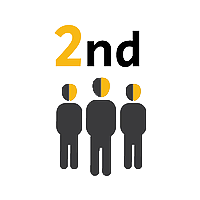
There are currently several very intriguing disruption models reflecting the original intent of the theory though not fully adhering to it.
The Small Disruptor
This is the original definition of disruption. As mentioned, the term was first defined as a process through which a small company with limited resources identifies unfulfilled market segments and draws on this as a stepping stone to central market segments.
A classic example of this kind of disruptor comes from the airline industry with the entrance of low-cost carriers.
The Parasite Disruptor
This model exploits the weakness of another existing model and uses it for its own survival. This often occurs with a technology that makes an existing model more accessible. The “parasite” attaches itself to the old model and uses it with the intention of adding a value of accessibility.
Fine examples of this case are travel booking sites and airfare comparison aggregators such as Booking.com or KAYAK, or on-demand transportation sites such as Gett.
The Eliminating Disruptor
Here we present a different definition for disruption, namely a new technology that displaces and eliminates an incumbent model. Such cases can be found in models that displace a “human” service provider by enabling a service to be implemented through technological means.
For example, digital banks which intend to eliminate the need for the brick-and-mortar bank branches. Other examples can be seen in the field of traditional postal service operations.
The Disruptor of a Disruptor
Once a company disrupts the rules of the game and creates a market disruption, it is doomed to attain all the characteristics of a legacy organization – and therefore is itself subject to new threats of disruption. Once the disruption becomes dominant, it urges the disrupted companies to react, and also encourages those seeking new market opportunities.
Such a noteworthy reaction could be a counter-disruption. For example, an application operated by taxi drivers which offers customers more attractive options can be serve as a counterweight to UBER and the like.













